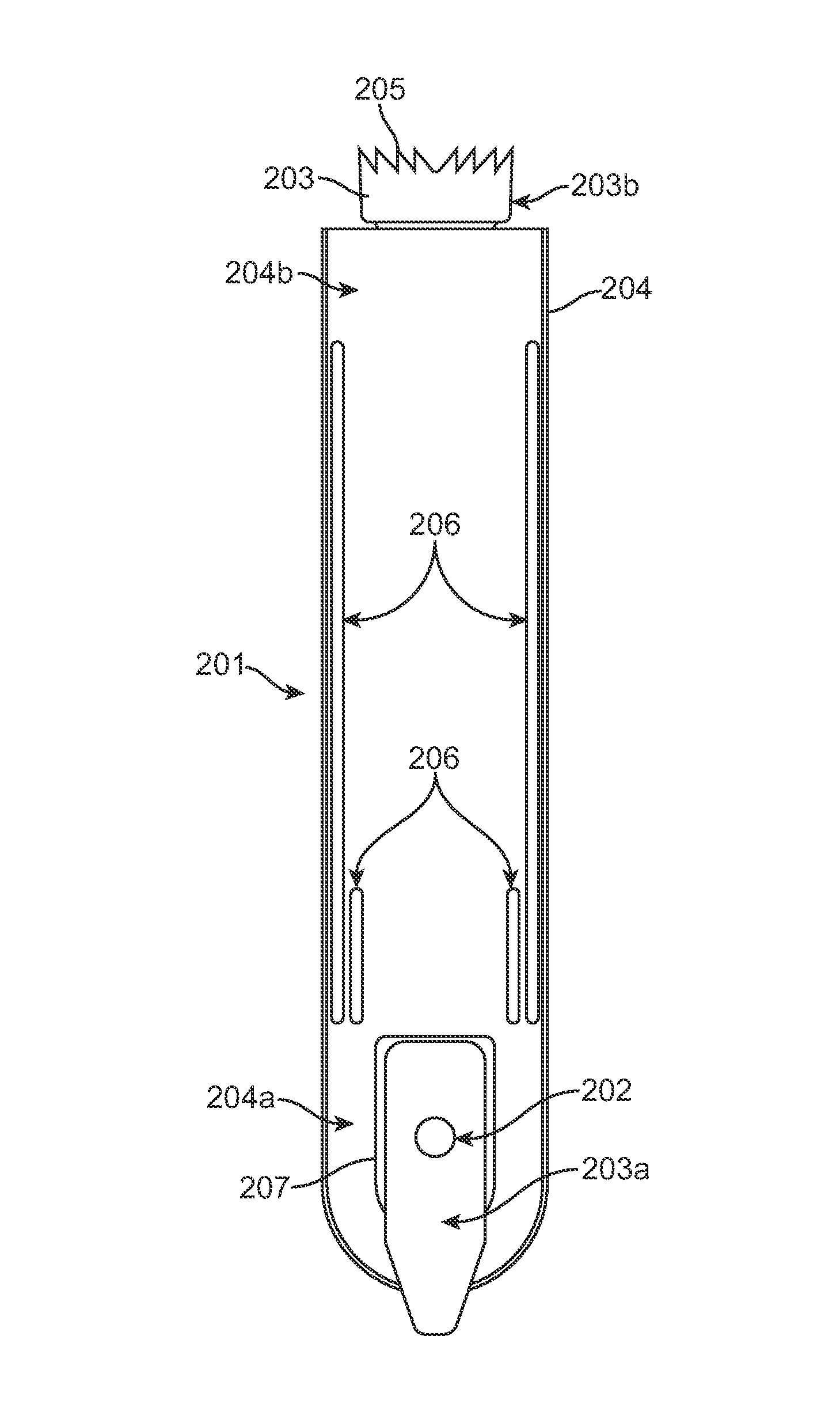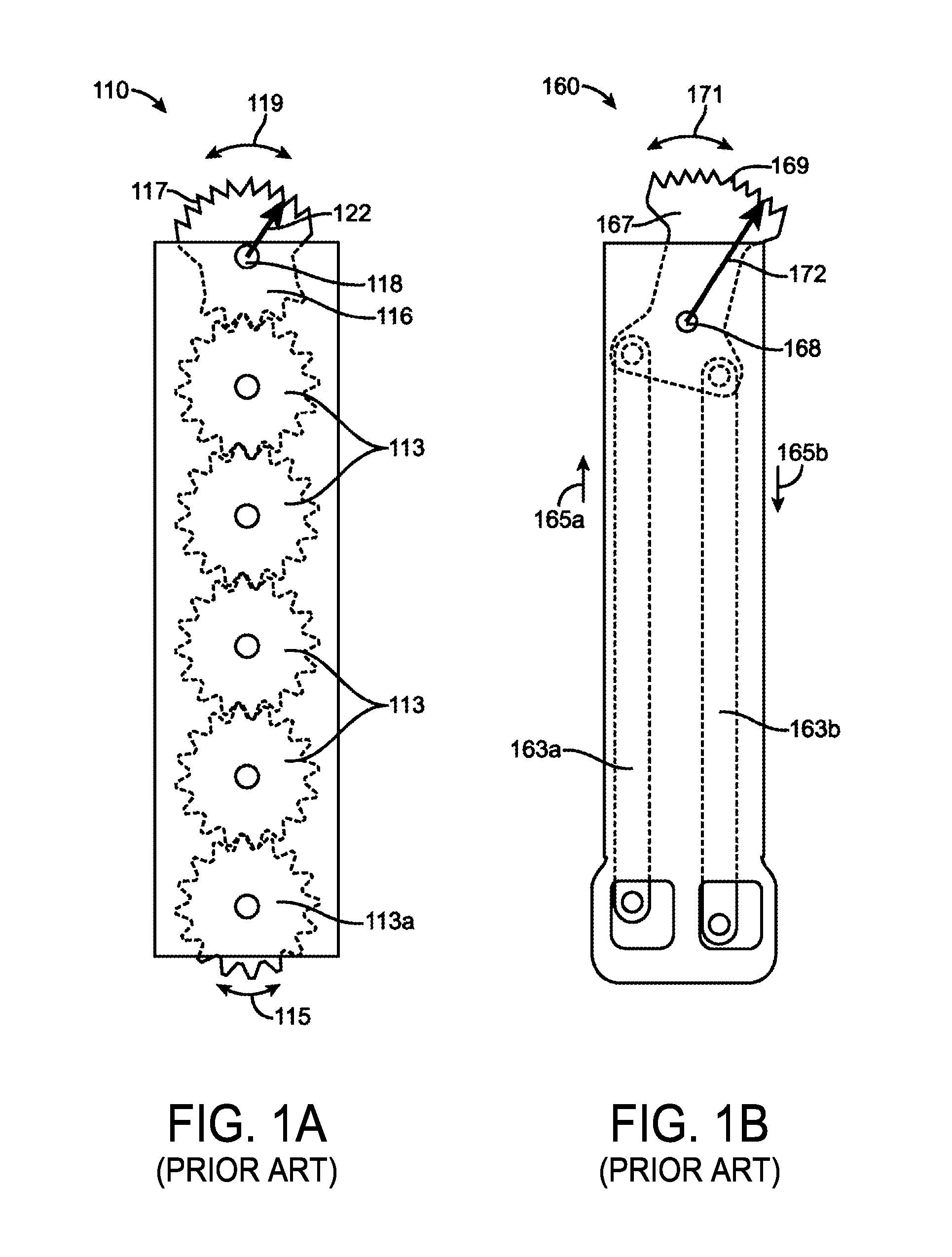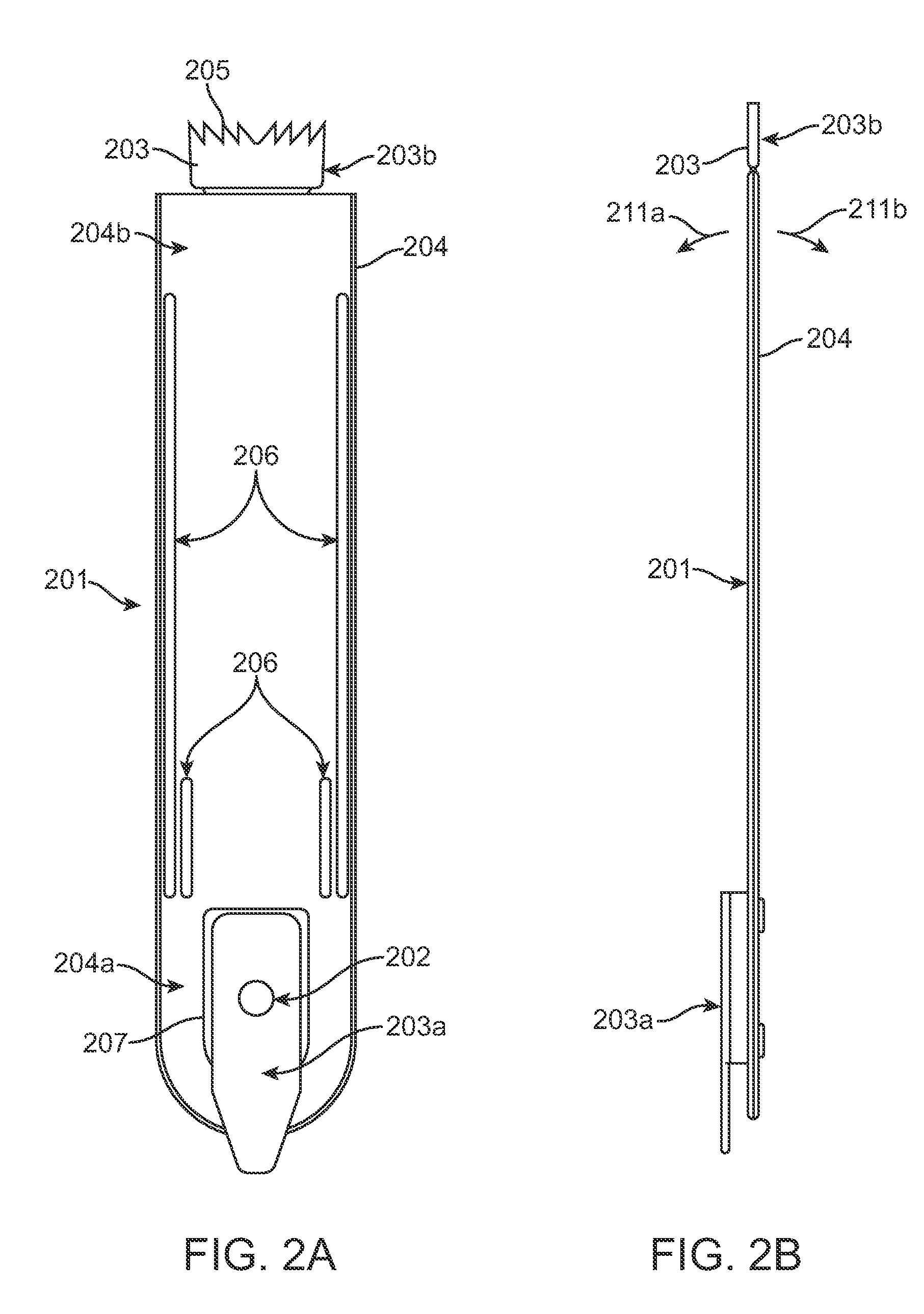Surgical saw blade device and system
a technology blades, which is applied in the field of surgical saw blades, can solve the problems of long-standing problems of surgeons, the loss of efficiency in such translation mechanisms, and the creation of many friction between the moving internal parts, so as to improve the tracking of the elongate monolithic blades, improve the accuracy of cutting, and improve the effect of chip removal efficiency
- Summary
- Abstract
- Description
- Claims
- Application Information
AI Technical Summary
Benefits of technology
Problems solved by technology
Method used
Image
Examples
Embodiment Construction
[0061]FIGS. 2A and 2B respectively show front and side views of a saw blade assembly 201 according to embodiments of the invention. The saw blade assembly 201 comprises an elongate monolithic blade 203 and an elongate sheath 204. The elongate monolithic blade 203 has a unitary construction with no moveably connected parts, making it much more mechanically efficient than known surgical saw blades employing translation mechanisms with moveably connected moving internal parts. Typically, the majority of the elongate monolithic blade 203 is housed within the interior of the elongate sheath 204. The elongate sheath 204 will typically have no other moving internal parts besides the elongate monolithic blade 203. The elongate monolithic blade 203 has a proximal end 203a and a distal cutting end 203b comprising a cutting edge 205 which typically comprises a plurality of sharp projections or teeth. The elongate sheath 204 has a proximal end 204a and a distal end 204b, which as shown in FIGS....
PUM
 Login to View More
Login to View More Abstract
Description
Claims
Application Information
 Login to View More
Login to View More - R&D
- Intellectual Property
- Life Sciences
- Materials
- Tech Scout
- Unparalleled Data Quality
- Higher Quality Content
- 60% Fewer Hallucinations
Browse by: Latest US Patents, China's latest patents, Technical Efficacy Thesaurus, Application Domain, Technology Topic, Popular Technical Reports.
© 2025 PatSnap. All rights reserved.Legal|Privacy policy|Modern Slavery Act Transparency Statement|Sitemap|About US| Contact US: help@patsnap.com



